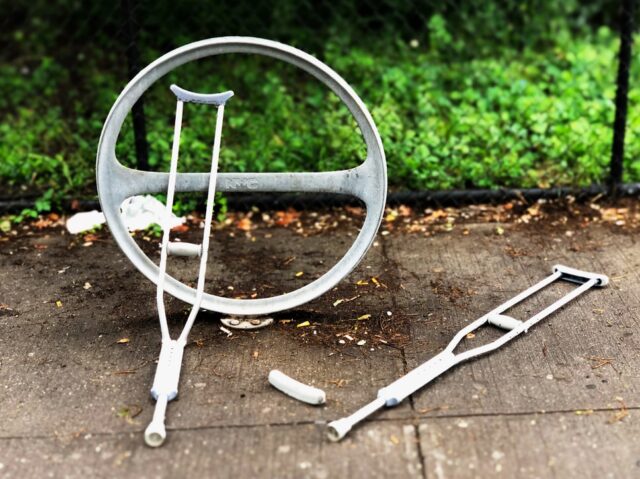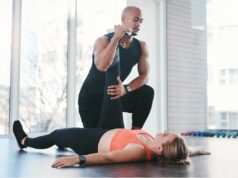
As one gets old, the body tends to get weak. Therefore, as people get older, the chances of falling and injuring themselves increase. This is usually a result of the loss of stability, causing difficulty in walking. It can be challenging for the person involved. Due to this concern, different organizations in the world have taken the initiative to develop tools that provide support and safety to those in need. There exist a variety of these tools specifically designed for older people.
In recent years, there has been a significant development in the industry of these aid devices ranging from simple tools like a walking stick, which is commonly known as the cane, to rollators, crutches, walkers, and more. This article aims to give you a clear understanding of the mobility aid devices for the elderly by examining the various types out there are and how they work.
Crutches

This is the first type of mobility aid that you can consider acquiring for an elderly person in your family. This type of assistance is designed in a way that some of the leg’s weight is taken and transferred to the upper body. Mostly, crutches are used by elders. They are used in pairs and are said to be more cumbersome and hard to use compared to another type of mobility aid known as the standard canes. Reliable research shows that crutches are better for temporary use, often recommended to individuals with leg injuries. In the case where the elderly need a long term walking aid, it is advisable to go for much better options.
Canes

These devices are known for uplifting mobility since they are known to be commonly used around the world. A cane helps to maintain the stability of a person. One of the reasons why medical experts highly recommend the cane is that it is designed with the ability to reduce strain mostly on the legs. The other reason is that its portable and one can carry it around. Cane is also a device that can be adjusted according to the needs of the client, making it more popular than other devices. It also allows independence, therefore increasing confidence in older people.
Canes and crutches have close similarities in that they both transfer the weight of the body from the legs to the upper part of the body, thus supporting its weight. The canes affect wrists and hands with enormous pressure. This implies that it is not the most preferred tool for people with an upper-body that is weak.
The different types of canes include:
Forearm Canes: these kinds of rods are designed for supporting forearms. They have an extension that helps transfer weight to the upper arm from wrists and hands. They are also referred to as crutches, which have been discussed above.
Adjustable Canes: these are canes with lengths that can be adjusted to meet the need of the client. They are said to have lower stability compared to standard canes. It is recommendable that before one decides using the adjustable canes, they should find standard cane with proper measurement.
Quad canes: This type is more stable. It is also more substantial compared to the other models and is recommended for people with serious stability issues. This is because there are four “feet” at the bottom of the cane.
Wheelchair

As for the wheelchair, the elderly do not have to move as it does the walking. This is possible when the elderly are using the electric type of wheelchair. If the elderly are finding difficulty in walking or putting weight on the lower limbs, then they should go for a wheelchair instead of other mobility aids. It is also suitable for individuals planning to cover great distances. Today, the market is flooded with plenty of wheelchair designs. Therefore, choosing the right model to buy can be confusing. The elderly care experts at upliftingmobility.com reviewed the leading wheelchairs in the market, which can help you easily find the ideal wheelchair to buy. Also, with a review, it will help much to come up with an option that meets your budget.
Scooters

When it comes to scooters, they exist in two types which are:
Knee scooters
The tool is made in a way that the person using it can have one knee rested on a cushion that is padded while using the other leg to propel the walker. They are recommended for people that have injured only one of their legs. In the case where one needs a mobility device for staying active, a knee scooter is recommended. Many users have found it to be fun to use. However, knee scooters are not advisable for individuals with a limited mobility problem.
Mobility scooters
Mobility scooters are specially designed for outdoor use. These machines have steering controls and are powered by a battery. They tend to be bulkier than wheelchairs. They are said to be made for replacing walking. These devices are helpful to people with trouble being in the outdoor environment. Great range of outdoor mobility scooters you can find on keepmovingcare.com.
Walkers
Last in the list is the walker, a device with four wheels. In some cases, the elderly will find two wheels fixed at the front to smooth movement. They tend to give more balance and support in comparison with crutches and canes. This is due to the contact they have with the ground. An appropriate independence level is maintained as the person using it can place much of their weight on the two frame sides.
One of the reasons why they are better than crutches and canes is that they are of lightweight despite them being more substantial. That is why many people prefer them to canes and crutches. However, walkers are said to be hard to maneuver when outdoor. This is because, in such an environment, there is a lot of obstruction. Due to this, they are not the best option for the outdoor environment.
Above are just some of the many walking aid devices that can be of great help to the elderly. There is a wide range of options in the market. One needs to put into consideration many factors before making a purchase. Some of the things that the elderly need to consider include the risks that come with the device and the ways to mitigate them. It is most important that the elderly should see a physical therapist learn more and know the best option to go for.







